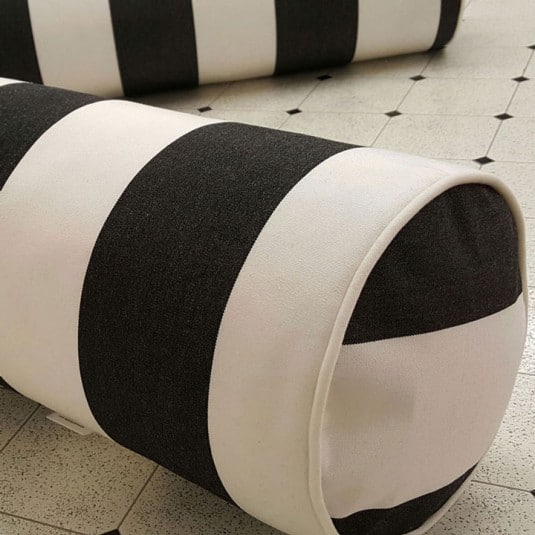This step-by-step guide on how to sew a cylinder pillow, more commonly known as bolster pillow, will level things up as you mix decorations in your place.
You can conveniently apply a décor touch to the living room furniture or bedroom with a cylinder pillow for retaining. You can also comfortably hug your cylinder pillows while asleep.

What is a Cylinder Pillow?
A cylinder pillow, also known as a bolster pillow, is a long, cylindrical pillow that’s typically made from cotton or polyester. These pillows are often filled with foam, such as memory foam, polyester fiberfill, fabric-backed sew foam and more.
Cylinder pillows are often used to provide added support for different parts of your body, like your legs, knees, or neck. The cylindrical shape is perfect for lumbar support. Cylindrical pillows are versatile. Aside from providing support, you can use them as throw pillows or even as a yoga bolster.
Who Can Use a Cylindrical Pillow?
Anyone can use a cylindrical pillow! But they’re also perfect for pregnant women and other people who have a hard time sleeping. New mothers can also use cylindrical pillows for support while nursing their babies. They’re also great for people with back and shoulder pains as it supports and relieves certain pressures.
3 Steps on Sewing Cylinder Pillows
You can make the pillow in the morning for an easy project and instantly have a highly decorative cushion in bed by night after understanding how the cylinder pillow can be made on your own. To make a firmer pillow, you can use polyester.
Step 1: Prepare the materials
The supplies you will need include a fabric of your choice, loose batting or polyester fill, pins, a needle, a sewing machine, and a thread that matches your fabric. The circumference of your pillow is up to you as long as you add an extra inch to it.
In choosing the dimensions of your cylinder pillow, the ends’ diameter should be multiplied by 3.14. Then, you can add an inch for the seam allowance for both ends. The width of the pillow’s body should follow the circumference of the ends.
Step 2: Form the ends
Fold the material in two, the wrong side facing outside. Set the paint container as a guide to the top of the garment close to the lower part. With the cloth pen, trace the circumference of the can.
Cut the traced line by merging two pieces of cloth. This instantly gives you two circular fabrics for the ends of the cushion. Stitch around each circle a string of long stitching. The stitch on the circumference should have a 0.5-inch gap from the side.
Step 3: Forming the body
For the body of the cylinder pillow, you will need a rectangle-cut fabric. Following the circumference with an extra inch for the width, you will need a length of 24″ for the cylinder. Then, fold the cut shape in half with the right side on the inside.
Pin the two parts together on the edges. Sew the end of the cylinder with the body to form the tube. You can use a slip-stitch when sewing the ends with the body together. To guide you, pin the circle to the body’s border with the right side out.
Repeat this step with the other end. However, do not sew the second circle entirely since you will need a gap to insert the batting or the polyester fill. You can leave three inches on one end of the cylinder pillow.
You can also sew a zipper on one end of your pillow if you plan to replace the filling from time to time. Ensure that you create a seam finish to your pillow. When ironing the pillow, lower the heat near the zipper teeth to avoid clashing.
Step 4: Filling the pillow
If you are using cloth for the fill, fold it so that it measures 24 inches long. On the contrary, you can buy pre-made pillow shapes on stores as long as it fits your desired pillow’s measurement. It should be the same dimension as the cylinder.
Continuing the stitch, close the gap on the second circle to the body by hand and cover the raw edges. Switch the pillow fabric facing the right side while the batting is in use. Ensure that the filling is even out without any lumps before closing the gap.
Final Thoughts on How to Sew a Cylinder Pillow
About every bedroom has a set of throw pillows somewhere in their sofas or beds as you browse at home decorating books or magazines. Everybody capable of stitching should acquire and manage with a small fraction of having a personalized pillow.
Instead of choosing from what’s available in stores, you can experiment with your desired colors and patterns. Since there are various tutorials online that are easy to follow, you can make your cylinder pillow from the comforts of your home.
This simple tutorial on how to sew a cylinder pillow will certainly guide you on creating your DIY project. Cylinder pillows are not only excellent decorations for your home but also a perfect hugging material. Make yourself one today!
